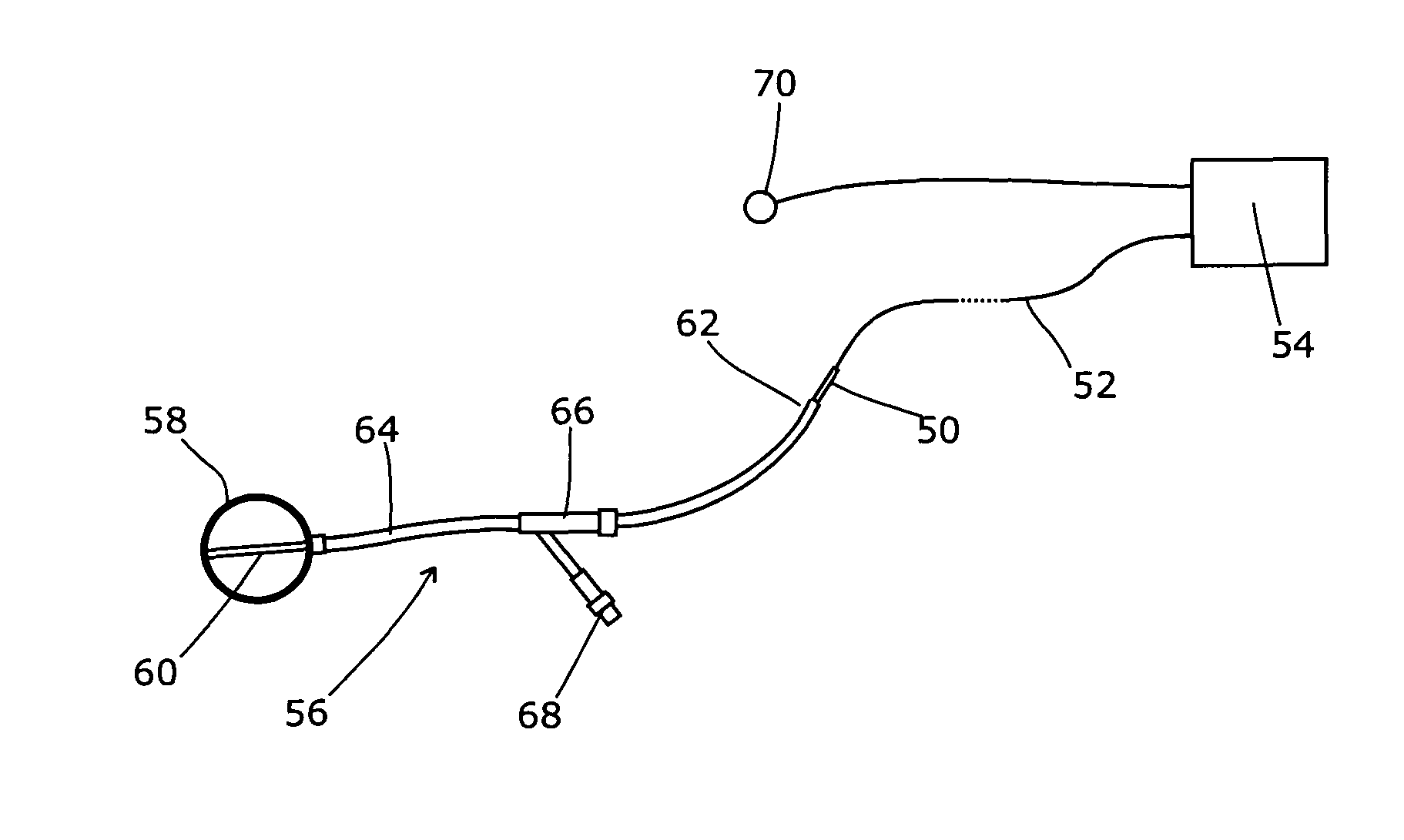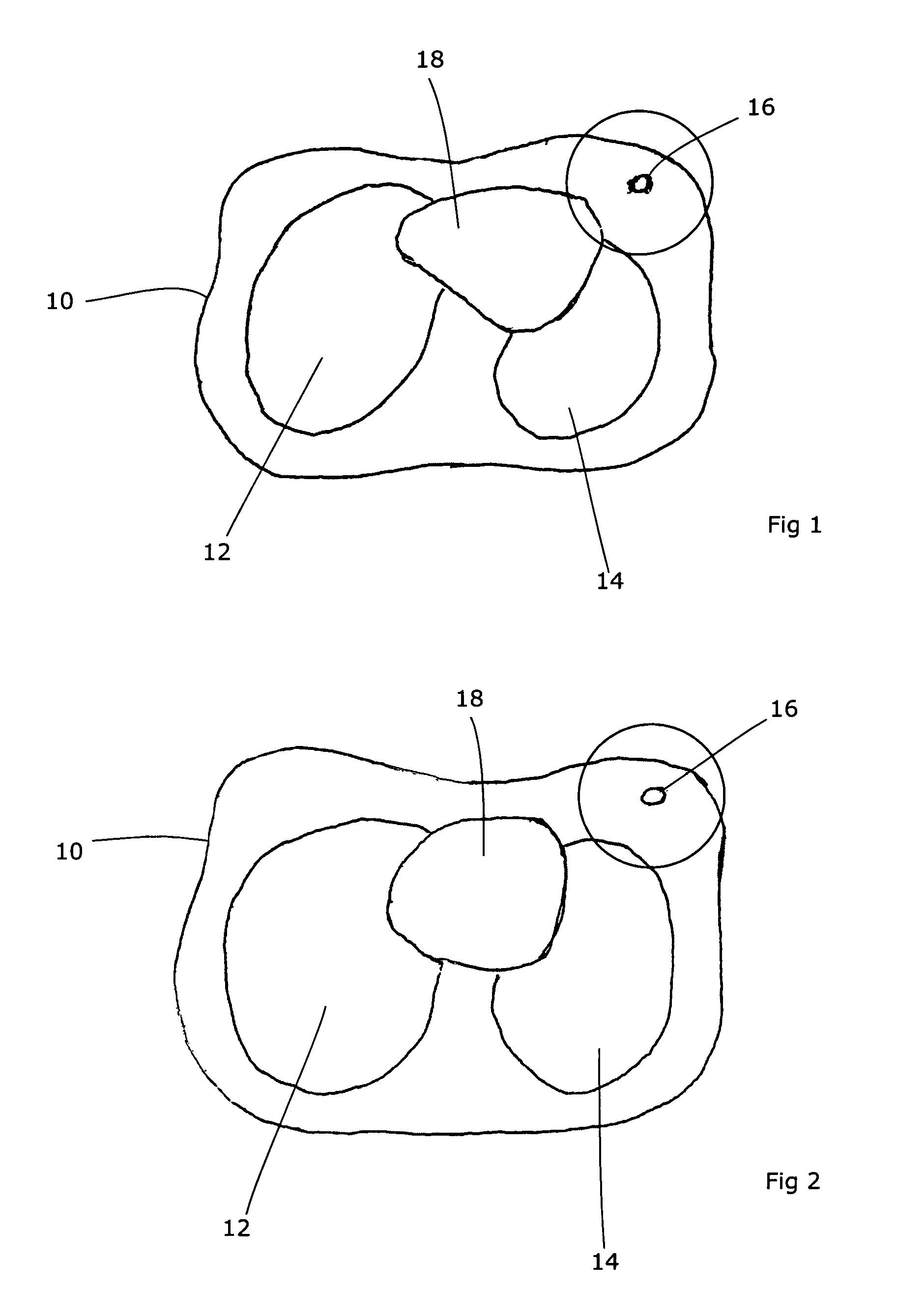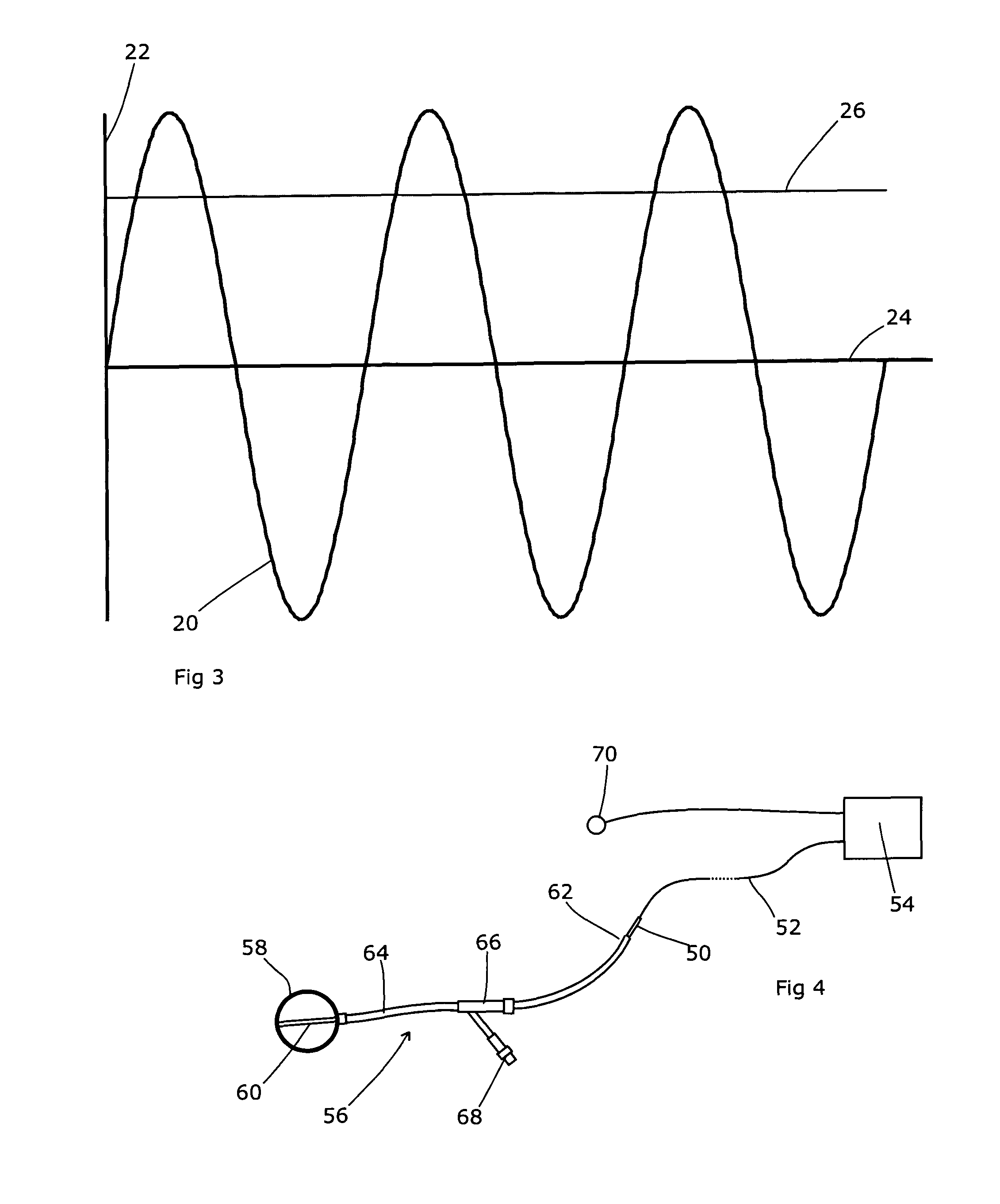Apparatus for respiration state gated brachytherapy
a technology of brachytherapy and apparatus, applied in the field of brachytherapy, can solve the problems of radiation exposure to the heart, and achieve the effects of less radiation dose, less penetration into the tissue, and less radiation dos
- Summary
- Abstract
- Description
- Claims
- Application Information
AI Technical Summary
Benefits of technology
Problems solved by technology
Method used
Image
Examples
Embodiment Construction
[0022]The invention exploits the following facts / features to reduce the radiation dose to the heart:
[0023]a) E-HDR dose rate falls off rapidly with distance
[0024]b) E-HDR radiation can be turned on and off quickly
[0025]c) The heart is moved away from the left breast when a patient inhales
[0026]By only turning on the radiation beam when the heart is near its maximum distance from the radiation source, the radiation to the heart will be further minimised. This is shown in FIGS. 1 and 2, which show a section through a patient 10 in the exhaled and inhaled state respectively. The right lung 12 and the left lung 14 are visible, as is the heart 18 and a volume 16 from which a tumour has been surgically removed leaving a void. Also shown in FIGS. 1 and 2 are the 5% dose levels for an x-ray source located in the volume 16; these cover the target volume for the radiation, i.e. the breast tissue surrounding volume 16. It can be seen that in the exhaled state shown in FIG. 1, this overlaps wit...
PUM
 Login to View More
Login to View More Abstract
Description
Claims
Application Information
 Login to View More
Login to View More - R&D
- Intellectual Property
- Life Sciences
- Materials
- Tech Scout
- Unparalleled Data Quality
- Higher Quality Content
- 60% Fewer Hallucinations
Browse by: Latest US Patents, China's latest patents, Technical Efficacy Thesaurus, Application Domain, Technology Topic, Popular Technical Reports.
© 2025 PatSnap. All rights reserved.Legal|Privacy policy|Modern Slavery Act Transparency Statement|Sitemap|About US| Contact US: help@patsnap.com



